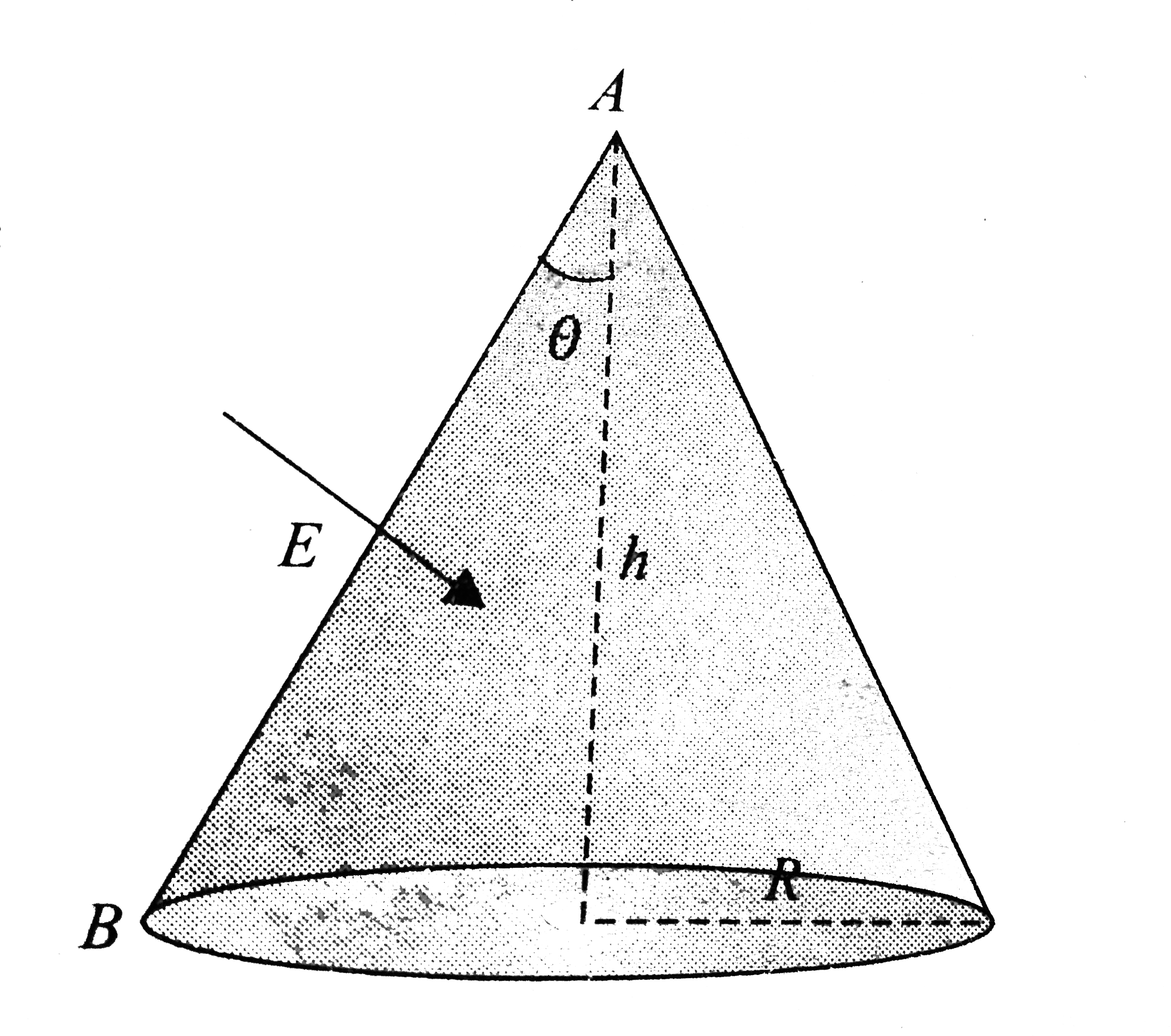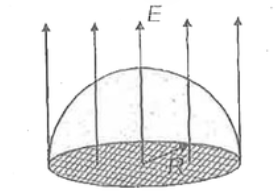A conic surface is placed in a uniform electric field E as shown in figure. Such that the field is perpendicular to the surface on the side AB. The base of the cone is of radius R, and the height of the cone is h. The angle of the cone is θ.

Find the magnitude of the flux that enters the cone's curved surface from the left side. Do not count the outgoing flux (θ<45∘).
ER[hcosθ+π(R/2)sinθ]
ER[hcosθ+πR/2sinθ]
ER[hcosθ+πRsinθ]
none of these
The correct Answer is:A
a. Flux entering the cone from side AB will ultimately also pass
through areas A1 and A2. So,
ϕ=EA1cosθ+EA2cos(90−θ)
=E(122Rhcosθ+π2R2sinθ)
=ER[hcosθ+π(R/2)sinθ]

Topper's Solved these Questions
- ELECTRIC FLUX AND GAUSS LAWBOOK - CENGAGE PHYSICS ENGLISHCHAPTER - ELECTRIC FLUX AND GAUSS LAWEXERCISE - Multiple Correct
8 Videos
- ELECTRIC FLUX AND GAUSS LAWBOOK - CENGAGE PHYSICS ENGLISHCHAPTER - ELECTRIC FLUX AND GAUSS LAWEXERCISE - Comprehension
36 Videos
- ELECTRIC FLUX AND GAUSS LAWBOOK - CENGAGE PHYSICS ENGLISHCHAPTER - ELECTRIC FLUX AND GAUSS LAWEXERCISE - Subjective
12 Videos
- ELECTRIC CURRENT AND CIRCUITBOOK - CENGAGE PHYSICS ENGLISHCHAPTER - ELECTRIC CURRENT AND CIRCUITEXERCISE - Interger
8 Videos
- ELECTRIC POTENTIALBOOK - CENGAGE PHYSICS ENGLISHCHAPTER - ELECTRIC POTENTIALEXERCISE - DPP 3.5
15 Videos
Similar Questions
Knowledge Check
The height of a cone is equal to the radius of its base. The radius of a sphere is equal to the radius of the base of the cone. The ratio of the volume of the cone to the volume of the sphere is
A112B14C13D11
The radius and height of a cone are in the ratio 4:3. The area of the base is 154cm2. Find the area of the curved surface.
View SolutionIf a sphere of radius 2r has the same volume as that of a cone with circular base of radius r, then find the height of the cone.
View SolutionThe volume of a cone is 18480cm3. If the height of the cone is 40cm. Find the radius of its base.
View SolutionThe radius of base of a cone is r and height is h. Find its volume.
View SolutionThe diameter of a cone is 14cm and its slant height is 9cm. Find the area of its curved surface.
View SolutionThe diameter of a cone is 14cm and its slant height is 9cm. Find the area of its curved surface.
View SolutionA cylinder and a cone are of the same base radius and of same height. Find the ratio of the volume of the cylinder to that of the cone.
View Solution

